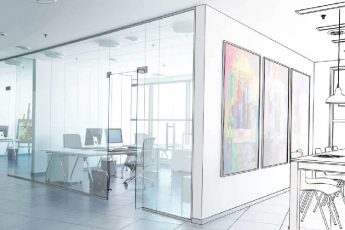Creating furniture is a complex, multi-stage process that combines creativity, technology, and craftsmanship. From a sketch on paper to the finished product, every step demands attention to detail and a professional approach. Let’s explore the main stages of furniture manufacturing, with a particular focus on Cutting MDF Services and MDF processing.
1. Design and Planning
The first step is developing a furniture design. Designers create sketches, considering functionality, aesthetics, and ergonomics. During this stage, designers determine the dimensions, select materials and hardware, and define the overall style of the furniture. They also create 3D models and technical drawings to guide further production.
2. Choosing Materials
The choice of materials depends on the purpose of the furniture, its style, and budget. Commonly used materials include:
- Solid Wood: Eco-friendly, durable, and aesthetically pleasing. Often used for premium furniture.
- Particleboard (Chipboard): Affordable and widely used for cabinet furniture.
- MDF (Medium-Density Fiberboard): A material with a uniform structure, ideal for processing. It is perfect for facades, decorative elements, and furniture with curved details.
- Plywood: A strong, multi-layered material used for frames and furniture bases.
3. Material Cutting
At this stage, materials are cut according to technical drawings. Precision is crucial, as the quality of furniture assembly depends on it.
MDF Cutting:
Thanks to its uniform structure, MDF can be cut using various techniques:
- Mechanical Cutting:
- Circular Saws: Commonly used for straight cuts. It is important to use fine-toothed saws to prevent chipping.
- Band Saws: Suitable for curved cuts and complex shapes.
- Jigsaws: Used for manual cutting and detail adjustments.
- Laser Cutting: Ensures high precision and allows for the creation of intricate patterns, ideal for decorative elements.
- CNC Milling: Enables the production of complex 3D shapes, grooves, slots, and other decorative details with high accuracy.
4. Detail Processing
After cutting, the details undergo additional processing:
- Edge Banding: Applying edge strips to protect against moisture and improve appearance. Particularly important for chipboard and MDF.
- Milling: Creating grooves, holes for hardware, and decorative elements.
- Sanding: Preparing surfaces for painting or varnishing.
5. Assembly
This stage involves assembling individual parts into the final product. Various fasteners are used, such as screws, confirmats, dowels, and cam locks.
6. Finishing
The final stage is finishing the furniture:
- Painting and Varnishing: Protects the surface and gives it the desired color and shine.
- Veneering: Covering surfaces with a thin layer of natural wood.
- Laminating: Applying PVC film or other coatings.
7. Quality Control and Packaging
Before delivery to the client, the furniture undergoes quality control. The assembly, finishing, and completeness are checked. After that, everything is packed for transportation.
Conclusion
Furniture production is a complex but fascinating process. Thanks to modern technologies and qualified specialists, it is now possible to create designs of any complexity and style. Understanding the main stages of production helps to make an informed choice.








